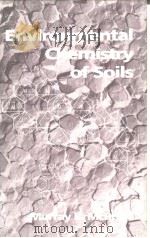《environmental chemistry P753》求取 ⇩
| 作者 | 编者 |
|---|---|
| 出版 | 未查询到或未知 |
| 参考页数 | ✅ 真实服务 非骗流量 ❤️ |
| 出版时间 | 没有确切时间的资料 目录预览 |
| ISBN号 | 无 — 违规投诉 / 求助条款 |
| PDF编号 | 820577448(学习资料 勿作它用) |
| 求助格式 | 扫描PDF(若分多册发行,每次仅能受理1册) |

Chapter 1The Environment and Sustainability Science1
1.1From the Sun to Fossil Fuels and Back Again1
1.1.1 The Brief but Spectacular Era of Fossil Fuels2
1.1.2 Back to the Sun2
1.2The Science of Sustainability3
1.2.1 Environmental Science4
1.2.2 Green Science and Technology4
1.3 Chemistry and the Environment4
1.4Water, Air, Earth, Life, and Technology5
1.4.1 Water and the Hydrosphere5
1.4.2 Air and the Atmosphere6
1.4.3 Earth, the Geosphere7
1.4.4 Life, the Biosphere7
1.4.5 Technology and the Environment7
1.5Ecology, Ecotoxicology, and the Biosphere8
1.5.1 The Biosphere8
1.5.2 Ecology9
1.5.3 Ecotoxicology9
1.6Energy and Cycles of Energy10
1.6.1 Light and Electromagnetic Radiation10
1.6.2 Energy Flow and Photosynthesis in Living Systems11
1.6.3 Energy Utilization11
1.7Human Impact and Pollution12
1.7.1 Some Definitions Pertaining to Pollution12
1.7.2 Pollution of Various Spheres of the Environment12
1.8Chemical Fate and Transport12
1.8.1 Physical Transport14
1.8.2 Reactivity14
1.8.3 Mass Balance Expression14
1.8.4 Distribution among Phases15
1.9Chemical Fate and Transport in the Atmosphere, Hydrosphere,and Geosphere15
1.9.1 Pollutants in the Atmosphere16
1.9.2 Pollutants in the Hydrosphere16
1.9.3 Pollutants in the Geosphere17
1.10Environmental Mischief and Terrorism17
1.10.1 Protection through Green Chemistry and Engineering17
1.11 Environmental Forensics18
Literature Cited19
Supplementary References19
Questions and Problems19
Chapter 2Chemistry and the Anthrosphere: Environmental Chemistry and Green Chemistry23
2.1 Environmental Chemistry23
2.2Matter and Cycles of Matter24
2.2.1 Carbon Cycle25
2.2.2 Nitrogen Cycle27
2.2.3 Oxygen Cycle28
2.2.4 Phosphorus Cycle28
2.2.5 Sulfur Cycle28
2.3Anthrosphere and Environmental Chemistry29
2.3.1 Components of the Anthrosphere30
2.4Technology and the Anthrosphere31
2.4.1 Engineering32
2.5Infrastructure33
2.5.1 Vulnerable Infrastructure34
2.6 Components of the Anthrosphere That Influence the Environment35
2.7 Effects of the Anthrosphere on Earth37
2.8Integration of the Anthrosphere into the Total Environment38
2.8.1 Anthrosphere and Industrial Ecology39
2.9Green Chemistry40
2.9.1 Green Synthetic Chemistry40
2.9.2 Risk Reduction41
2.9.3 Specific Aspects of Green Chemistry41
2.9.4 Three Undesirable Characteristics of Chemicals: Persistence,Bioaccumulation, and Toxicity42
2.9.5 Green Chemistry and Environmental Chemistry42
Literature Cited42
Supplementary References43
Questions and Problems43
Chapter 3Fundamentals of Aquatic Chemistry47
3.1 Importance of Water47
3.2Water: From Molecules to Oceans47
3.2.1 Sources and Uses of Water: The Hydrological Cycle47
3.2.2 Properties of Water, a Unique Substance50
3.2.3 Water Molecule50
3.3 Characteristics of Bodies of Water52
3.4 Aquatic Life52
3.5 Introduction to Aquatic Chemistry53
3.6Gases in Water54
3.6.1 Oxygen in Water54
3.7Water Acidity and Carbon Dioxide in Water55
3.7.1 Carbon Dioxide in Water56
3.8Alkalinity59
3.8.1 Contributors to Alkalinity at Different pH Values60
3.8.2 Dissolved Inorganic Carbon and Alkalinity60
3.8.3 Influence of Alkalinity on CO2 Solubility61
3.9Calcium and Other Metals in Water62
3.9.1 Hydrated Metal Ions as Acids62
3.9.2 Calcium in Water63
3.9.3 Dissolved Carbon Dioxide and Calcium Carbonate Minerals64
3.10Complexation and Chelation65
3.10.1 Occurrence and Importance of Chelating Agents in Water67
3.11Bonding and Structure of Metal Complexes68
3.11.1 Selectivity and Specitycity in Chelation68
3.12 Calculations of Species Concentrations68
3.13 Complexation by Deprotonated Ligands69
3.14 Complexation by Protonated Ligands70
3.15Solubilization of Lead Ion from Solids by NTA71
3.15.1 Reaction of NTA with Metal Carbonate73
3.15.2 Effect of Calcium Ion upon the Reaction of Chelating Agents with Slightly Soluble Salts74
3.16Polyphosphates and Phosphonates in Water75
3.16.1 Polyphosphates76
3.16.2 Hydrolysis of Polyphosphates76
3.16.3 Complexation by Polyphosphates76
3.16.4 Phosphonates77
3.17 Complexation by Humic Substances77
3.18 Complexation and Redox Processes79
Literature Cited79
Supplementary References79
Questions and Problems80
Chapter 4Oxidation-Reduction in Aquatic Chemistry83
4.1 The Significance of Oxidation-Reduction83
4.2 Electron and Redox Reactions85
4.3 Electron Activity and pE87
4.4 The Nernst equation88
4.5 Reaction Tendency: Whole Reaction from Half-Reactions89
4.6 The Nernst Equation and Chemical Equilibrium90
4.7 The Relationship of pE to Free Energy91
4.8 Reactions in Terms of One Electron-Mole91
4.9 The Limits of pE in Water93
4.10 pE Values in Natural Water Systems94
4.11 pE-pH Diagrams95
4.12 Humic Substances as Natural Reductants98
4.13 Photochemical Processes in Oxidation-Reduction99
4.14 Corrosion99
Literature Cited100
Supplementary References100
Questions and Problems101
Chapter 5Phase Interactions in Aquatic Chemistry103
5.1 Chemical Interactions Involving Solids, Gases, and Water103
5.2Importance and Formation of Sediments103
5.2.1 Formation of Sediments104
5.2.2 Organic and Carbonaceous Sedimentary Materials105
5.3Solubilities106
5.3.1 Solubilities of Solids106
5.3.2 Solubilities of Gases107
5.4Colloidal Particles in Water108
5.4.1 Contaminant Transport by Colloids in Water109
5.4.2 Occurrence of Colloids in Water109
5.4.3 Kinds of Colloidal Particles109
5.4.4 Colloid Stability110
5.5 Colloidal Properties of Clays112
5.6Aggregation of Particles113
5.6.1 Flocculation of Colloids by Polyelectrolytes114
5.6.2 Flocculation of Bacteria by Polymeric Materials114
5.7 Surface Sorption by Solids115
5.8Solute Exchange with Bottom Sediments116
5.8.1 Trace-Level Metals in Suspended Matter and Sediments117
5.8.2 Phosphorus Exchange with Bottom Sediments118
5.8.3 Organic Compounds on Sediments and Suspended Matter119
5.8.4 Bioavailability of Sediment Contaminants120
5.9 Interstitial Water121
5.10Phase Interactions in Chemical Fate and Transport122
5.10.1 Rivers122
5.10.2 Lakes and Reservoirs122
5.10.3 Exchange with the Atmosphere122
5.10.4 Exchange with Sediments123
Literature Cited124
Supplementary References124
Questions and Problems125
Chapter 6Aquatic Microbial Biochemistry127
6.1Aquatic Biochemical Processes127
6.1.1 Microorganisms at Interfaces128
6.2 Algae129
6.3 Fungi130
6.4 Protozoa130
6.5Bacteria131
6.5.1 Autotrophic and Heterotrophic Bacteria131
6.5.2 Oxic and Anoxic Bacteria132
6.5.3 Marine Bacteria132
6.6 The Prokaryotic Bacterial Cell133
6.7 Kinetics of Bacterial Growth134
6.8Bacterial Metabolism134
6.8.1 Factors Affecting Bacterial Metabolism135
6.8.2 Microbial Oxidation and Reduction137
6.9Microbial Transformations of Carbon139
6.9.1 Methane-Forming Bacteria139
6.9.2 Bacterial Utilization of Hydrocarbons140
6.9.3 Microbial Utilization of Carbon Monoxide140
6.10Biodegradation of Organic Matter140
6.10.1Oxidation141
6.10.1.1 Microbial Oxidation of Hydrocarbons141
6.10.2 Other Biochemical Processes in Biodegradation of Organics142
6.11Microbial Transformations of Nitrogen143
6.11.1 Nitrogen Fixation144
6.11.2 Nitrification145
6.11.3 Nitrate Reduction146
6.11.4 Denitrification146
6.11.5 Competitive Oxidation of Organic Matter by Nitrate Ion and Other Oxidizing Agents146
6.12Microbial Transformations of Phosphorus and Sulfur147
6.12.1 Phosphorus Compounds147
6.12.2Sulfur Compounds148
6.12.2.1 Oxidation of H2S and Reduction of Sulfate by Bacteria148
6.12.3 Microorganism-Mediated Degradation of Organic Sulfur Compounds149
6.13 Microbial Transformations of Halogens and Organohalides149
6.14Microbial Transformations of Metals and Metalloids150
6.14.1 Acid Mine Waters151
6.14.2 Microbial Transitions of Selenium152
6.14.3 Microbial Corrosion153
Literature Cited153
Supplementary References154
Questions and Problems154
Chapter 7Water Pollution159
7.1Nature and Types of Water Pollutants159
7.1.1 Markers of Water Pollution159
7.2 Elemental Pollutants159
7.3Heavy Metals161
7.3.1 Cadmium161
7.3.2 Lead161
7.3.3 Mercury162
7.4 Metalloids163
7.5Organically Bound Metals and Metalloids164
7.5.1 Organotin Compounds165
7.6Inorganic Species165
7.6.1 Cyanide165
7.6.2 Ammonia and Other Inorganic Pollutants166
7.6.3 Asbestos in Water167
7.7 Algal Nutrients and Eutrophication167
7.8 Acidity, Alkalinity, and Salinity168
7.9 Oxygen, Oxidants, and Reductants169
7.10Organic Pollutants170
7.10.1 Bioaccumulation of Organic Pollutants170
7.10.2 Sewage170
7.10.3Soaps, Detergents, and Detergent Builders171
7.10.3.1 Soaps171
7.10.3.2 Detergents172
7.10.4 Naturally Occurring Chlorinated and Brominated Compounds174
7.10.5 Microbial Toxins174
7.11Pesticides in Water175
7.11.1 Natural Product Insecticides, Pyrethrins, and Pyrethroids175
7.11.2 DDT and Organochlorine Insecticides177
7.11.3 Organophosphate Insecticides178
7.11.4 Carbamates179
7.11.5 Fungicides179
7.11.6Herbicides180
7.11.6.1 Bipyridilium Compounds180
7.11.6.2 Herbicidal Heterocyclic Nitrogen Compounds181
7.11.6.3 Chlorophenoxy Herbicides181
7.11.6.4 Miscellaneous Herbicides181
7.11.7 By-Products of Pesticide Manufacture182
7.12 Polychlorinated Biphenyls183
7.13Emerging Water Pollutants, Pharmaceuticals, and Household Wastes184
7.13.1 Bactericides186
7.13.2 Estrogenic Substances in Wastewater Effluents186
7.13.3 Biorefractory Organic Pollutants186
7.14 Radionuclides in the Aquatic Environment188
Literature Cited192
Supplementary References192
Questions and Problems193
Chapter 8Water Treatment197
8.1 Water Treatment and Water Use197
8.2 Municipal Water Treatment197
8.3 Treatment of Water for Industrial Use198
8.4Sewage Treatment199
8.4.1 Primary Waste Treatment199
8.4.2 Secondary Waste Treatment by Biological Processes200
8.4.3 Membrane Bioreactor203
8.4.4 Tertiary Waste Treatment203
8.4.5 Physical-Chemical Treatment of Municipal Wastewater203
8.5 Industrial Wastewater Treatment204
8.6Removal of Solids205
8.6.1 Dissolved Air Flotation206
8.6.2 Membrane Filtration Processes206
8.7Removal of Calcium and Other Metals207
8.7.1 Removal of Iron and Manganese211
8.8Removal of Dissolved Organics212
8.8.1 Removal of Herbicides213
8.9Removal of Dissolved Inorganics214
8.9.1 Ion Exchange214
8.9.2 Electrodialysis214
8.9.3 Reverse Osmosis215
8.9.4 Phosphorus Removal216
8.9.5 Nitrogen Removal217
8.10 Sludge218
8.11Water Disinfection219
8.11.1 Chlorine Dioxide220
8.11.2 Ozone and Other Oxidants221
8.11.3 Disinfection with Ultraviolet Radiation222
8.12Natural Water Purification Processes222
8.12.1 Industrial Wastewater Treatment by Soil223
8.13Green Water223
8.13.1 Reuse and Recycling of Wastewater224
8.14 Water Conservation226
8.15 Protecting Water Supplies from Attack227
Literature Cited228
Supplementary References228
Questions and Problems229
Chapter 9The Atmosphere and Atmospheric Chemistry233
9.1Introduction233
9.1.1 Photochemistry and Some Important Terms233
9.1.2 Atmospheric Composition234
9.1.3 Gaseous Oxides in the Atmosphere234
9.1.4 Atmospheric Methane235
9.1.5 Hydrocarbons and Photochemical Smog236
9.1.6 Particulate Matter236
9.1.7 Primary and Secondary Pollutants236
9.2 Importance of the Atmosphere236
9.3Physical Characteristics of the Atmosphere237
9.3.1 Variation of Pressure and Density with Altitude237
9.3.2 Stratification of the Atmosphere238
9.4Energy Transfer in the Atmosphere240
9.4.1 The Earth’s Radiation Budget241
9.5Atmospheric Mass Transfer, Meteorology, and Weather241
9.5.1 Atmospheric Water in Energy and Mass Transfer243
9.5.2 Air Masses243
9.5.3 Topographical Effects244
9.5.4 Movement of Air Masses244
9.5.5 Global Weather245
9.5.6 Weather Fronts and Storms246
9.6 Inversions and Air Pollution247
9.7Global Climate and Microclimate247
9.7.1 Atmospheric Carbon Dioxide and Human Modifications of Climate248
9.7.2 Microclimate248
9.7.3 Effects of Urbanization on Microclimate249
9.8Chemical and Photochemical Reactions in the Atmosphere249
9.8.1 Photochemical Processes251
9.8.2Ions and Radicals in the Atmosphere253
9.8.2.1 Free Radicals254
9.8.3 Hydroxyl and Hydroperoxyl Radicals in the Atmosphere254
9.8.4 Chemical and Biochemical Processes in Evolution of the Atmosphere256
9.9 Acid-Base Reactions in the Atmosphere257
9.10 Reactions of Atmospheric Oxygen258
9.11 Reactions of Atmospheric Nitrogen259
9.12 Atmospheric Water260
9.13 Influence of the Anthrosphere260
9.14 Chemical Fate and Transport in the Atmosphere261
Literature Cited262
Supplementary References262
Questions and Problems263
Chapter 10Particles in the Atmosphere265
10.1 Introduction265
10.2Physical Behavior of Particles in the Atmosphere266
10.2.1 Size and Settling of Atmospheric Particles267
10.3 Physical Processes for Particle Formation267
10.4Chemical Processes for Particle Formation268
10.4.1 Inorganic Particles269
10.4.2 Organic Particles270
10.4.3 Polycyclic Aromatic Hydrocarbon Synthesis270
10.5The Composition of Inorganic Particles271
10.5.1 Fly Ash272
10.5.2 Asbestos272
10.6Toxic Metals in the Atmosphere273
10.6.1 Atmospheric Mercury273
10.6.2 Atmospheric Lead273
10.6.3 Atmospheric Beryllium274
10.7 Radioactive Particles274
10.8The Composition of Organic Particles275
10.8.1 PAHs275
10.8.2 Carbonaceous Particles from Diesel Engines276
10.9Effects of Particles276
10.9.1 Partitioning of Semivolatile Organic Substances between Air and Particles277
10.10 Water as Particulate Matter277
10.11 Atmospheric Chemical Reactions Involving Particles278
10.12Control of Particulate Emissions280
10.12.1 Particle Removal by Sedimentation and Inertia280
10.12.2 Particle Filtration280
10.12.3 Scrubbers281
10.12.4 Electrostatic Removal282
Literature Cited282
Supplementary References283
Questions and Problems283
Chapter 11Gaseous Inorganic Air Pollutants285
11.1 Inorganic Pollutant Gases285
11.2Production and Control of Carbon Monoxide285
11.2.1 Control of Carbon Monoxide Emissions285
11.3 Fate of Atmospheric CO286
11.4 Sulfur Dioxide Sources and the Sulfur Cycle286
11.5Sulfur Dioxide Reactions in the Atmosphere287
11.5.1 Effects of Atmospheric Sulfur Dioxide289
11.5.2 Sulfur Dioxide Removal290
11.6Nitrogen Oxides in the Atmosphere292
11.6.1 Atmospheric Reactions of NO294
11.6.2 Harmful Effects of Nitrogen Oxides296
11.6.3 Control of Nitrogen Oxides297
11.7 Acid Rain299
11.8 Ammonia in the Atmosphere299
11.9Fluorine, Chlorine, and their Gaseous Compounds299
11.9.1 Chlorine and Hydrogen Chloride300
11.10 Reduced Sulfur Gases301
Literature Cited303
Supplementary References303
Questions And Problems304
Chapter 12Organic Air Pollutants307
12.1Organic Compounds in the Atmosphere307
12.1.1 Loss of Organic Substances from the Atmosphere307
12.1.2 Global Distillation and Fractionation of Persistent Organic Pollutants (POP)307
12.2Biogenic Organic Compounds308
12.2.1 Removal of Atmospheric Organic Compounds by Plants310
12.3Pollutant Hydrocarbons310
12.3.1 Aromatic Hydrocarbons313
12.3.2 Reactions of Atmospheric Aromatic Hydrocarbons314
12.4 Carbonyl Compounds: Aldehydes and Ketones315
12.5Miscellaneous Oxygen-Containing Compounds317
12.5.1 Alcohols317
12.5.2 Phenols318
12.5.3 Ethers318
12.5.4 Oxides319
12.5.5 Carboxylic Acids319
12.6 Organonitrogen Compounds320
12.7Organohalide Compounds322
12.7.1 Chlorofluorocarbons323
12.7.2 Atmospheric Reactions of Hydrofluorocarbons and Hydrochlorofluorocarbons324
12.7.3 Perfluorocarbons325
12.7.4 Marine Sources of Organohalogen Compounds325
12.7.5 Chlorinated Dibenzo-p-dioxins and Dibenzofurans325
12.8 Organosulfur Compounds326
12.9 Organic Particulate Matter327
12.10 Hazardous Air Pollutants Organic Compounds327
Literature Cited329
Supplementary References330
Questions and Problems330
Chapter 13Photochemical Smog333
13.1 Introduction333
13.2Smog-Forming Emissions334
13.2.1 Control of Exhaust Hydrocarbons334
13.2.2 Automotive Emission Standards337
13.2.3 Polluting Green Plants337
13.3Smog-Forming Reactions of Organic Compounds in the Atmosphere338
13.3.1 Photochemical Reactions of Methane338
13.4 Overview of Smog Formation340
13.5Mechanisms of Smog Formation341
13.5.1 Nitrate Radical347
13.5.2 Photolyzable Compounds in the Atmosphere347
13.6 Reactivity of Hydrocarbons348
13.7 Inorganic Products from Smog348
13.8 Effects of Smog349
Literature Cited352
Supplementary References352
Questions and Problems353
Chapter 14 The Endangered Global Atmosphere355
14.1Climate Change and Anthropogenic Effects355
14.1.1 Changes in Climate356
14.2Global Warming357
14.2.1 Methane and Other Greenhouse Gases360
14.2.2 Particles and Global Warming360
14.2.3 The Outlook for Global Warming and Associated Effects361
14.3Green Science and Technology to Alleviate Global Warming361
14.3.1 Minimization362
14.3.2 Counteracting Measures364
14.3.3 Adaptation364
14.4 Acid Rain365
14.5Stratospheric Ozone Destruction368
14.5.1 Shielding Effect of the Ozone Layer369
14.5.2 Ozone Layer Destruction369
14.5.3 Green Chemistry Solutions to Stratospheric Ozone Depletion372
14.6Atmospheric Brown Clouds373
14.6.1 Yellow Dust374
14.7 Atmospheric Damage by Photochemical Smog375
14.8Nuclear Winter377
14.8.1 Doomsday Visitors from Space379
14.9 What Is to Be Done?379
Literature Cited381
Supplementary References381
Questions and Problems382
Chapter 15 The Geosphere and Geochemistry385
15.1Introduction385
15.2The Nature of Solids in the Geosphere386
15.2.1 Structure and Properties of Minerals386
15.2.2 Kinds of Minerals387
15.2.3 Evaporites387
15.2.4 Volcanic Sublimates388
15.2.5Igneous, Sedimentary, and Metamorphic Rock388
15.2.5.1 Rock Cycle389
15.2.5.2 Stages of Weathering389
15.3Physical Form of the Geosphere389
15.3.1 Plate Tectonics and Continental Drift390
15.3.2 Structural Geology390
15.4Internal Processes391
15.4.1 Earthquakes392
15.4.2 Volcanoes392
15.4.3 Surface Processes393
15.5 Sediments393
15.6 Clays394
15.7Geochemistry395
15.7.1 Physical Aspects of Weathering396
15.7.2 Chemical Weathering396
15.7.3 Biological Aspects of Weathering397
15.8Groundwater in the Geosphere397
15.8.1 Water Wells399
15.8.2 Qanats400
15.9Environmental Aspects of the Geosphere400
15.9.1 Natural Hazards401
15.9.2 Anthropogenic Hazards401
15.10 Earthquakes401
15.11Volcanoes403
15.11.1 Mud Volcanoes404
15.12 Surface Earth Movement404
15.13 Stream and River Phenomena406
15.14Phenomena at the Land/Ocean Interface407
15.14.1 The Threat of Rising Sea Levels408
15.15 Phenomena at the Land/Atmosphere Interface409
15.16 Effects of Ice409
15.17Effects of Human Activities410
15.17.1 Extraction of Geospheric Resources: Surface Mining411
15.17.2 Environmental Effects of Mining and Mineral Extraction411
15.18 Air Pollution and the Geosphere411
15.19 Water Pollution and the Geosphere412
15.20Waste Disposal and the Geosphere413
15.20.1 Municipal Refuse413
Literature Cited415
Supplementary References415
Questions and Problems416
Chapter 16 Soil and Agricultural Environmental Chemistry419
16.1Soil and Agriculture419
16.1.1 Agriculture419
16.1.2 Pesticides and Agriculture421
16.2Nature and Composition of Soil421
16.2.1 Water and Air in Soil422
16.2.2 The Inorganic Components of Soil424
16.2.3 Organic Matter in Soil424
16.2.4 Soil Humus426
16.2.5 The Soil Solution426
16.3Acid-Base and Ion-Exchange Reactions in Soils427
16.3.1 Adjustment of Soil Acidity428
16.3.2 Ion-Exchange Equilibria in Soil428
16.4 Macronutrients in Soil429
16.5Nitrogen, Phosphorus, and Potassium in Soil430
16.5.1 Nitrogen430
16.5.2 Phosphorus432
16.5.3 Potassium433
16.6 Micronutrients in Soil433
16.7Fertilizers434
16.7.1 Fertilizer Pollution435
16.8 Pollutants from Livestock Production436
16.9Pesticides and Their Residues in Soil436
16.9.1 Soil Fumigants437
16.10Wastes and Pollutants in Soil438
16.10.1 Biodegradation and the Rhizosphere440
16.11Soil Loss and Degradation440
16.11.1 Soil Sustainability and Water Resources441
16.12Saving the Land442
16.12.1 Agroforestry443
16.12.2 Soil Restoration443
16.13 Genetic Engineering and Agriculture444
16.14 Green Chemistry and Sustainable Agriculture445
16.15Agriculture and Health447
16.15.1 Food Contamination448
16.16 Protecting the Food Supply from Attack448
Literature Cited449
Supplementary References449
Questions and Problems450
Chapter 17 Green Chemistry and Industrial Ecology453
17.1Changing the Bad Old Ways453
17.2Green Chemistry454
17.2.1 Twelve Principles of Green Chemistry454
17.3Reduction of Risk: Hazard and Exposure456
17.3.1 The Risks of Not Taking Risks458
17.4 Waste Prevention and Green Chemistry458
17.5Green Chemistry and Synthetic Chemistry459
17.5.1 Yield and Atom Economy459
17.6Feedstocks461
17.6.1 Biological Feedstocks461
17.7 Reagents463
17.8 Stoichiometric and Catalytic Reagents464
17.9Media and Solvents465
17.9.1 Water, the Greenest Solvent466
17.9.2 Dense Phase Carbon Dioxide as a Solvent467
17.9.3 Gas-Expanded Solvents468
17.10 Enhancing Reactions468
17.11 Industrial Ecology470
17.12 The Five Major Components of an Industrial Ecosystem472
17.13 Industrial Metabolism474
17.14 Materials Flow and Recycling in an Industrial Ecosystem475
17.15 The Kalundborg Industrial Ecosystem475
17.16 Consideration of Environmental Impacts in Industrial Ecology476
17.17Life Cycles: Expanding and Closing the Materials Loop477
17.17.1 Product Stewardship479
17.17.2 Embedded Utility479
17.18Life-Cycle Assessment480
17.18.1 Scoping in Life-Cycle Assessment480
17.19Consumable, Recyclable, and Service (Durable) Products481
17.19.1 Desirable Characteristics of Consumables481
17.19.2 Desirable Characteristics of Recyclables481
17.19.3 Desirable Characteristics of Service Products482
17.20Design for Environment482
17.20.1 Products, Processes, and Facilities483
17.20.2 Key Factors in Design for Environment483
17.20.3 Hazardous Materials in Design for Environment484
17.21Inherent Safety484
17.21.1 Increased Safety with Smaller Size485
17.22 Industrial Ecology and Ecological Engineering486
Literature Cited486
Supplementary References486
Questions and Problems488
Chapter 18Resources and Sustainable Materials491
18.1 Where to Get the Stuff We Need?491
18.2Minerals in the Geosphere492
18.2.1 Evaluation of Mineral Resources492
18.3 Extraction and Mining493
18.4 Metals494
18.5Metal Resources and Industrial Ecology496
18.5.1 Aluminum497
18.5.2 Chromium497
18.5.3 Copper498
18.5.4 Cobalt498
18.5.5 Lead498
18.5.6 Lithium498
18.5.7 Potassium499
18.5.8 Zinc500
18.6 Nonmetal Mineral Resources500
18.7 Phosphates501
18.8Sulfur502
18.8.1 Gypsum503
18.9 Wood: A Major Renewable Resource503
18.10Extending Resources through the Practice of Industrial Ecology504
18.10.1 Metals504
18.10.2 Plastics and Rubber505
18.10.3 Lubricating Oil506
Literature Cited506
Supplementary References506
Questions and Problems507
Chapter 19Sustainable Energy: The Key to Everything509
19.1 Energy Problem509
19.2 Nature of Energy510
19.3 Sources of Energy Used in the Anthrosphere511
19.4Energy Devices and Conversions513
19.4.1 Fuel Cells516
19.5 Green Technology and Energy Conversion Efficiency517
19.6 Energy Conservation and Renewable Energy Sources518
19.7 Petroleum and Natural Gas520
19.8Coal521
19.8.1 Coal Conversion521
19.9 Carbon Sequestration for Fossil Fuel Utilization523
19.10 Industrial Ecology for Energy and Chemicals524
19.11Nuclear Energy526
19.11.1 Nuclear Fusion528
19.12 Geothermal Energy528
19.13 The Sun: An Ideal, Renewable Energy Source529
19.14Energy from Moving Air and Moving Water531
19.14.1 Surprising Success of Wind Power531
19.14.2 Energy from Moving Water533
19.14.3 Energy from Moving Water without Dams534
19.15Biomass Energy534
19.15.1 Ethanol Fuel535
19.15.2 Biodiesel Fuel535
19.15.3 Unrealized Potential of Lignocellulose Fuels536
19.15.4 Biogas539
19.16 Hydrogen as a Means to Store and Utilize Energy540
19.17 Combined Power Cycles540
19.18 A System of Industrial Ecology for Methane Production541
Literature Cited542
Supplementary References542
Questions and Problems543
Chapter 20 Nature, Sources, and Environmental Chemistry of Hazardous Wastes545
20.1Introduction545
20.1.1 History of Hazardous Substances545
20.1.2 Legislation546
20.2Classification of Hazardous Substances and Wastes547
20.2.1 Characteristics and Listed Wastes547
20.2.2Hazardous Wastes548
20.2.2.1 Hazardous Wastes and Air and Water Pollution Control548
20.3Sources of Wastes549
20.3.1 Types of Hazardous Wastes550
20.3.2 Hazardous Waste Generators550
20.4Flammable and Combustible Substances551
20.4.1 Combustion of Finely Divided Particles552
20.4.2 Oxidizers552
20.4.3 Spontaneous Ignition553
20.4.4 Toxic Products of Combustion553
20.5Reactive Substances553
20.5.1 Chemical Structure and Reactivity554
20.6Corrosive Substances555
20.6.1 Sulfuric Acid556
20.7Toxic Substances556
20.7.1 Toxicity Characteristic Leaching Procedure556
20.8 Physical Forms and Segregation of Wastes557
20.9 Environmental Chemistry of Hazardous Wastes558
20.10 Physical and Chemical Properties of Hazardous Wastes559
20.11Transport, Effects, and Fates of Hazardous Wastes559
20.11.1 Physical Properties of Wastes560
20.11.2 Chemical Factors560
20.11.3 Effects of Hazardous Wastes560
20.11.4 Fates of Hazardous Wastes561
20.12 Hazardous Wastes and the Anthrosphere561
20.13 Hazardous Wastes in the Geosphere562
20.14 Hazardous Wastes in the Hydrosphere564
20.15 Hazardous Wastes in the Atmosphere566
20.16Hazardous Wastes in the Biosphere567
20.16.1 Microbial Metabolism in Waste Degradation567
20.16.2 Ecotoxicology of Hazardous Wastes568
20.17Hazardous Substances in Terrorism569
20.17.1 Detection of Hazardous Substances570
20.17.2 Removing Hazardous Agents571
Literature Cited571
Supplementary References572
Questions and Problems572
Chapter 21Industrial Ecology for Waste Minimization, Utilization, and Treatment575
21.1 Introduction575
21.2 Waste Reduction and Minimization575
21.3Recycling577
21.3.1 Examples of Recycling578
21.3.2Waste Oil Utilization and Recovery578
21.3.2.1 Recycling Waste Oil578
21.3.2.2 Waste Oil Fuel579
21.3.3 Waste Solvent Recovery and Recycle579
21.3.4 Recovery of Water from Wastewater580
21.4Physical Methods of Waste Treatment580
21.4.1Methods of Physical Treatment581
21.4.1.1 Phase Separations582
21.4.1.2 Phase Transition582
21.4.1.3 Phase Transfer583
21.4.1.4 Molecular Separation584
21.5Chemical Treatment: An Overview584
21.5.1Acid-Base Neutralization584
21.5.1.1 Acid Recovery584
21.5.2Chemical Precipitation585
21.5.2.1 Precipitation of Metals585
21.5.2.2 Coprecipitation of Metals586
21.5.3 Oxidation-Reduction586
21.5.4 Electrolysis587
21.5.5 Hydrolysis588
21.5.6 Chemical Extraction and Leaching588
21.5.7 Ion Exchange589
21.6 Green Waste Treatment by Photolyis and Sonolysis589
21.7Thermal Treatment Methods590
21.7.1Incineration591
21.7.1.1 Incinerable Wastes591
21.7.2 Hazardous Waste Fuel591
21.7.3 Incineration Systems591
21.7.4 Types of Incinerators592
21.7.5 Combustion Conditions592
21.7.6 Effectiveness of Incineration593
21.7.7 Wet Air Oxidation593
21.7.8 UV-Enhanced Wet Oxidation593
21.7.9 Destruction of Hazardous Wastes in Cement Manufacture593
21.8Biodegradation of Wastes594
21.8.1 Biodegradability594
21.8.2 Aerobic Treatment595
21.8.3 Anaerobic Treatment595
21.8.4 Reductive Dehalogenation595
21.9 Phytoremediation596
21.10Land Treatment and Composting596
21.10.1 Land Treatment596
21.10.2 Composting597
21.11Preparation of Wastes for Disposal597
21.11.1 Immobilization597
21.11.2 Stabilization597
21.11.3Solidification597
21.11.3.1 Sorption to a Solid Matrix Material598
21.11.3.2 Thermoplastics and Organic Polymers598
21.11.3.3 Vitrification598
21.11.3.4 Solidification with Cement599
21.11.3.5 Solidification with Silicate Materials599
21.11.3.6 Encapsulation599
21.11.4 Chemical Fixation599
21.12Ultimate Disposal of Wastes600
21.12.1 Disposal Aboveground600
21.12.2 Landfill600
21.12.3 Surface Impoundment of Liquids601
21.12.4 Deep-Well Disposal of Liquids601
21.13Leachate and Gas Emissions601
21.13.1 Leachate601
21.13.2 Hazardous Waste Leachate Treatment602
21.13.3 Gas Emissions602
21.14In Situ Treatment602
21.14.1 In Situ Immobilization602
21.14.2 Vapor Extraction603
21.14.3 Solidification In Situ603
21.14.4 Detoxification In Situ603
21.14.5 Permeable Bed Treatment603
21.14.6 In Situ Thermal Processes604
21.14.7 Soil Washing and Flushing604
Literature Cited604
Supplementary References605
Questions and Problems606
Chapter 22Environmental Biochemistry609
22.1Biochemistry609
22.1.1 Biomolecules609
22.2Biochemistry and the Cell610
22.2.1 Major Cell Features610
22.3Proteins611
22.3.1 Protein Structure613
22.3.2 Denaturation of Proteins614
22.4 Carbohydrates614
22.5 Lipids616
22.6 Enzymes618
22.7Nucleic Acids620
22.7.1 Nucleic Acids in Protein Synthesis623
22.7.2 Modified DNA623
22.8 Recombinant DNA and Genetic Engineering623
22.9Metabolic Processes624
22.9.1 Energy-Yielding Processes624
22.10Metabolism of Xenobiotic Compounds625
22.10.1 Phase Ⅰ and Phase Ⅱ Reactions625
Literature Cited626
Supplementary References626
Questions and Problems626
Chapter 23 Toxicological Chemistry629
23.1Introduction to Toxicology and Toxicological Chemistry629
23.1.1 Toxicology629
23.1.2 Synergism, Potentiation, and Antagonism631
23.2 Dose-Response Relationships631
23.3Relative Toxicities632
23.3.1 Nonlethal Effects632
23.4Reversibility and Sensitivity634
23.4.1 Hypersensitivity and Hyposensitivity634
23.5 Xenobiotic and Endogenous Substances634
23.6Toxicological Chemistry635
23.6.1 Toxicological Chemistry Defined635
23.6.2Toxicants in the Body635
23.6.2.1 Phase Ⅰ Reactions635
23.6.2.2 Phase Ⅱ Reactions636
23.7Kinetic Phase and Dynamic Phase637
23.7.1 Kinetic Phase637
23.7.2Dynamic Phase637
23.7.2.1 Primary Reaction in the Dynamic Phase637
23.7.2.2 Biochemical Effects in the Dynamic Phase638
23.7.2.3 Responses to Toxicants639
23.8Teratogenesis, Mutagenesis, Carcinogenesis, and Effects On the Immune and Reproductive Systems639
23.8.1 Teratogenesis639
23.8.2Mutagenesis639
23.8.2.1 Biochemistry of Mutagenesis640
23.8.3Carcinogenesis641
23.8.3.1 Biochemistry of Carcinogenesis642
23.8.3.2 Alkylating Agents in Carcinogenesis642
23.8.4Testing for Carcinogens643
23.8.4.1 Bruce Ames Test644
23.8.5 Immune System Response644
23.8.6 Endocrine Disruption644
23.9Health Hazards644
23.9.1 Assessment of Potential Exposure645
23.9.2 Epidemiological Evidence645
23.9.3 Estimation of Health Effects Risks646
23.9.4 Risk Assessment646
Literature Cited646
Supplementary References646
Questions and Problems647
Chapter 24Toxicological Chemistry of Chemical Substances649
24.1Introduction649
24.1.1 ATSDR Toxicological Profiles649
24.2Toxic Elements and Elemental Forms649
24.2.1 Ozone649
24.2.2 White Phosphorus651
24.2.3 Elemental Halogens651
24.2.4 Heavy Metals651
24.3Toxic Inorganic Compounds652
24.3.1 Cyanide652
24.3.2 Carbon Monoxide652
24.3.3 Nitrogen Oxides653
24.3.4Hydrogen Halides653
24.3.4.1 Hydrogen Fluoride653
24.3.4.2 Hydrogen Chloride654
24.3.5 Interhalogen Compounds and Halogen Oxides654
24.3.6 Inorganic Compounds of Silicon654
24.3.7 Asbestos655
24.3.8 Inorganic Phosphorus Compounds655
24.3.9 Inorganic Compounds of Sulfur655
24.3.10 Perchlorate656
24.3.11Organometallic Compounds656
24.3.11.1 Organolead Compounds656
24.3.11.2 Organotin Compounds657
24.3.11.3 Carbonyls657
24.3.11.4 Reaction Products of Organometallic Compounds657
24.4Toxicology of Organic Compounds657
24.4.1 Alkane Hydrocarbons657
24.4.2 Alkene and Alkyne Hydrocarbons658
24.4.3Benzene and Aromatic Hydrocarbons658
24.4.3.1 Toluene659
24.4.3.2 Naphthalene659
24.4.3.3 Polycyclic Aromatic Hydrocarbons659
24.4.4Oxygen-Containing Organic Compounds660
24.4.4.1 Oxides660
24.4.4.2 Alcohols660
24.4.5Phenols661
24.4.5.1 Aldehydes and Ketones661
24.4.5.2 Carboxylic Acids662
24.4.5.3 Ethers662
24.4.5.4 Acid Anhydrides662
24.4.5.5 Esters662
24.4.6Organonitrogen Compounds663
24.4.6.1 Aliphatic Amines663
24.4.6.2 Carbocyclic Aromatic Amines664
24.4.6.3 Pyridine664
24.4.6.4 Acrylamide: Toxic Potato Chips?664
24.4.6.5 Nitriles665
24.4.6.6 Nitro Compounds665
24.4.6.7 Nitrosamines665
24.4.6.8 Isocyanates and Methyl Isocyanate665
24.4.6.9 Organonitrogen Pesticides665
24.4.7Organohalide Compounds666
24.4.7.1 Alkyl Halides666
24.4.7.2 Alkenyl Halides667
24.4.7.3 Aryl Halides667
24.4.8Organohalide Pesticides668
24.4.8.1 TCDD668
24.4.8.2 Chlorinated Phenols669
24.4.9Organosulfur Compounds669
24.4.9.1 Sulfur Mustards669
24.4.10Organophosphorus Compounds670
24.4.10.1 Organophosphate Esters670
24.4.10.2 Phosphorothionate and Phosphorodithioate Ester Insecticides670
24.4.10.3 Organophosphorus Military Poisons671
24.5 Toxic Natural Products671
Literature Cited672
Supplementary References672
Questions and Problems673
Chapter 25Chemical Analysis of Water and Wastewater677
25.1General Aspects of Environmental Chemical Analysis677
25.1.1 Error and Quality Control677
25.1.2 Water Analysis Methods678
25.2 Classical Methods678
25.3Spectrophotometric Methods679
25.3.1 Absorption Spectrophotometry679
25.3.2 Atomic Absorption and Emission Analyses680
25.3.3 Atomic Emission Techniques682
25.4 Electrochemical Methods of Analysis682
25.5Chromatography683
25.5.1 High-Performance Liquid Chromatography685
25.5.2 Chromatographic Analysis of Water Pollutants686
25.5.3 Ion Chromatography686
25.6 Mass Spectrometry686
25.7Analysis of Water Samples687
25.7.1 Physical Properties Measured in Water687
25.7.2Water Sampling687
25.7.2.1 Extractors688
25.7.3 Water Sample Preservation689
25.7.4 Total Organic Carbon in Water689
25.7.5 Measurement of Radioactivity in Water690
25.7.6 Biological Toxins690
25.7.7 Summary of Water Analysis Procedures690
25.8 Automated Water Analyses692
25.9 Speciation692
25.10 Emerging Contaminants in Water Analysis693
25.11 Chiral Contaminants694
Literature Cited695
Supplementary References695
Questions and Problems696
Chapter 26 Analysis of Wastes and Solids697
26.1Introduction697
26.2 Sample Digestion for Elemental Analysis698
26.3Analyte Isolation for Organics Analysis698
26.3.1 Solvent Extraction698
26.3.2 Supercritical Fluid Extraction699
26.3.3 Pressurized Liquid Extraction and Subcritical Water Extraction699
26.4 Sample Cleanup700
26.5 Sample Preparation for VOCs701
26.6 Bioassay and Immunoassay Screening of Wastes702
26.7 Determination of Chelating Agents702
26.8 Toxicity Characteristic Leaching Procedure703
Literature Cited704
Supplementary References704
Questions and Problems705
Chapter 27 Analysis of the Atmosphere and Air Pollutants707
27.1Atmospheric Monitoring707
27.1.1 Air Pollutants Measured707
27.2 Sampling708
27.3 Methods of Analysis709
27.4 Determination of Sulfur Dioxide710
27.5 Nitrogen Oxides711
27.6 Analysis of Oxidants712
27.7 Analysis of Carbon Monoxide713
27.8Determination of Hydrocarbons and Organics714
27.8.1 Determination of Specific Organics in the Atmosphere714
27.9Analysis of Particulate Matter714
27.9.1 Filtration714
27.9.2 Collection by Impactors716
27.9.3 Particle Analysis716
27.9.4 X-Ray Fluorescence716
27.9.5 Determination of Lead in Particulate Matter717
27.10 Direct Spec trophotometric Analysis of Gaseous Air Pollutants718
Literature Cited719
Supplementary References720
Questions and Problems720
Chapter 28Analysis of Biological Materials and Xenobiotics723
28.1 Introduction723
28.2 Indicators of Exposure to Xenobiotics723
28.3Determination of Metals725
28.3.1 Direct Analysis of Metals725
28.3.2 Metals in Wet-Ashed Blood and Urine725
28.3.3 Extraction of Metals for Atomic Absorption Analysis725
28.4 Determination of Nonmetals and Inorganic Compounds726
28.5 Determination of Parent Organic Compounds726
28.6Measurement of Phase Ⅰ and Phase Ⅱ Reaction Products727
28.6.1 Phase Ⅰ Reaction Products727
28.6.2 Phase Ⅱ Reaction Products728
28.6.3 Mercapturates729
28.7 Determination of Adducts729
28.8 The Promise of Immunological Methods730
Literature Cited732
Supplementary References732
Questions and Problems733
Index735
《environmental chemistry P753》由于是年代较久的资料都绝版了,几乎不可能购买到实物。如果大家为了学习确实需要,可向博主求助其电子版PDF文件。对合法合规的求助,我会当即受理并将下载地址发送给你。
高度相关资料
-

- The Use of matrix reference materials in environmental analytical processes
- 1999 The Royal Society of Chemistry
-

- Environmental chemistry
- Colin"
-
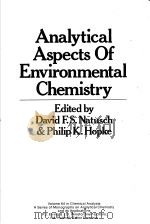
- ANALYTICAL ASPECTS OF ENVIRONMENTAL CHEMISTRY
- A WILEY INTERSCIENCE PUBLICATION
-
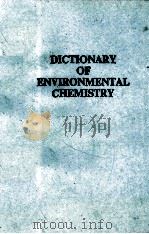
- DICTIONARY OF ENVIRONMENTAL CHEMISTRY
- 1990 ANMOL PUBLICATIONS
-

- ANALYTICAL TECHNIQUES IN ENVIRONMENTAL CHEMISTRY
- 1980 PERGAMON PRESS
-
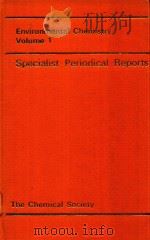
- ENVIRONMENTAL CHEMISTRY VOLUME 1
- 1975 THE CHEMICAL SOCIETY
-
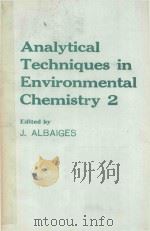
- ANALYTICAL TECHNIQUES IN ENVIRONMENTAL CHEMISTRY 2
- 1981 PERGAMON PRESS
-

- ENVIRONMENTAL CHEMISTRY
- 1976 ACADEMIC PRESS
-

- Environmental toxicology and chemistry
- 1998 Oxford University Press
提示:百度云已更名为百度网盘(百度盘),天翼云盘、微盘下载地址……暂未提供。➥ PDF文字可复制化或转WORD




